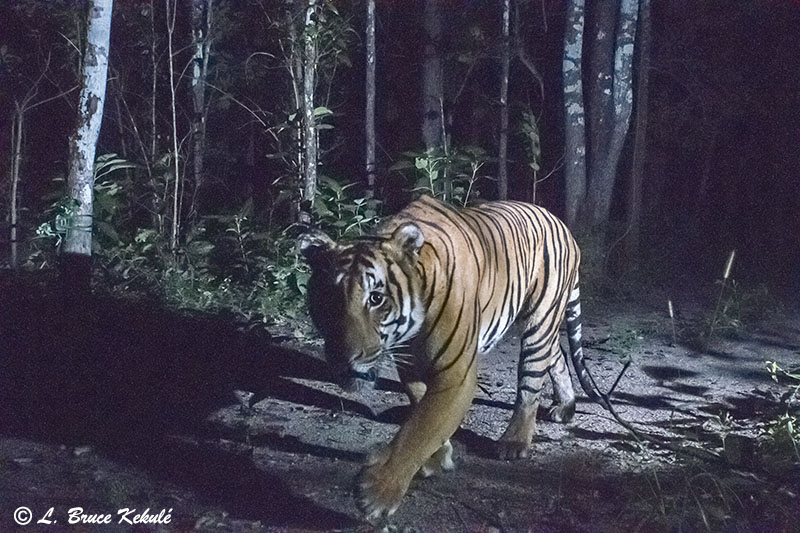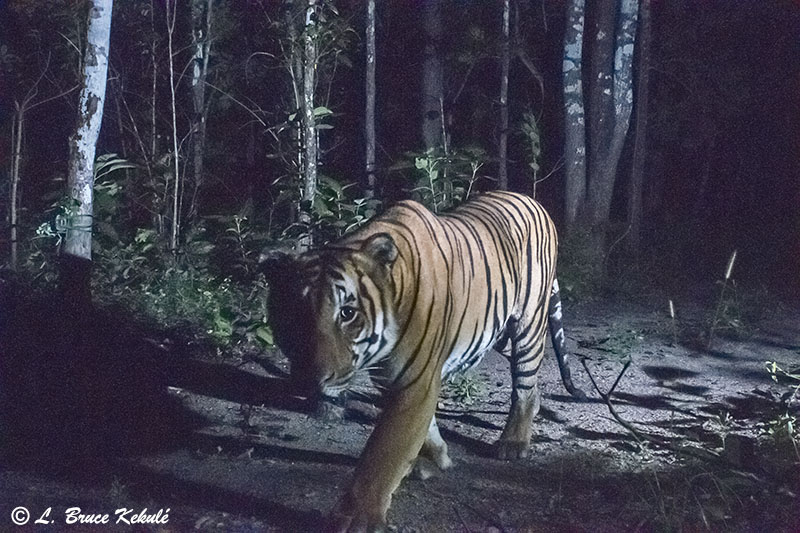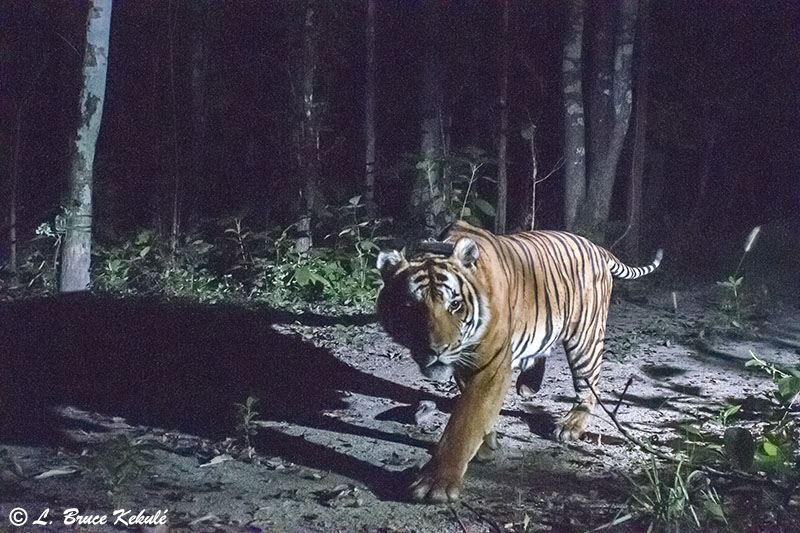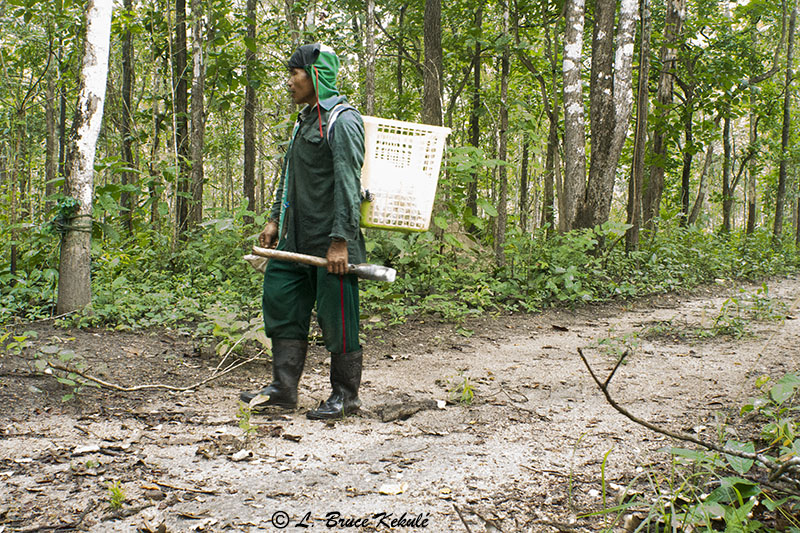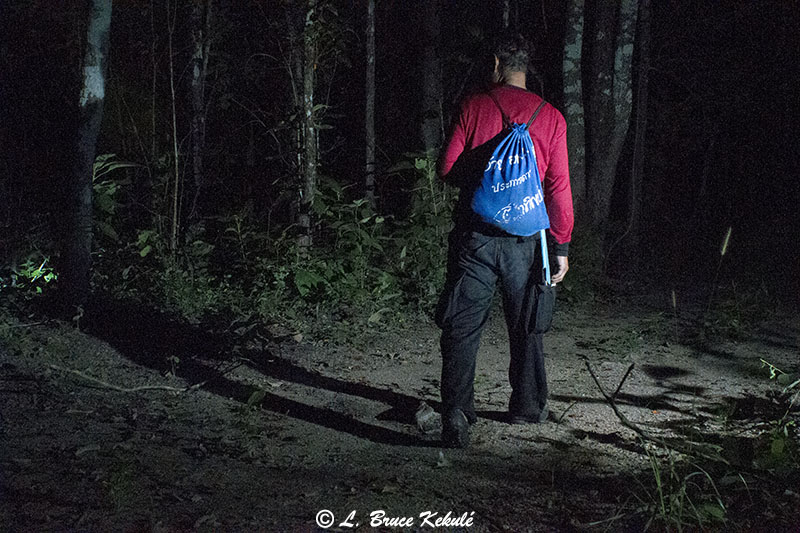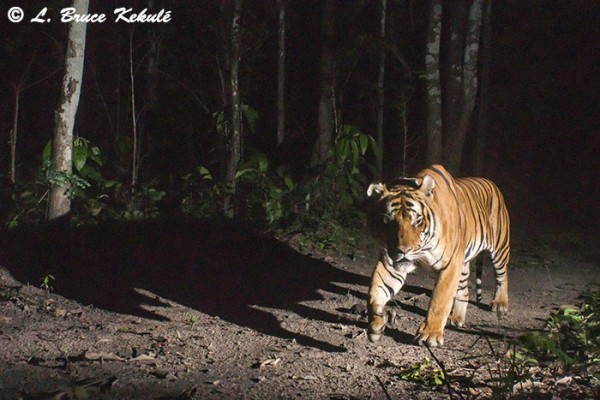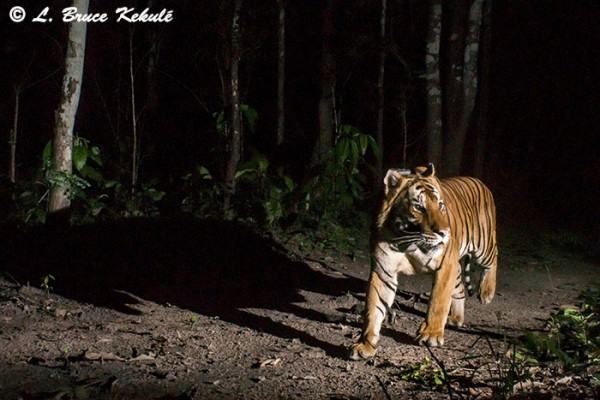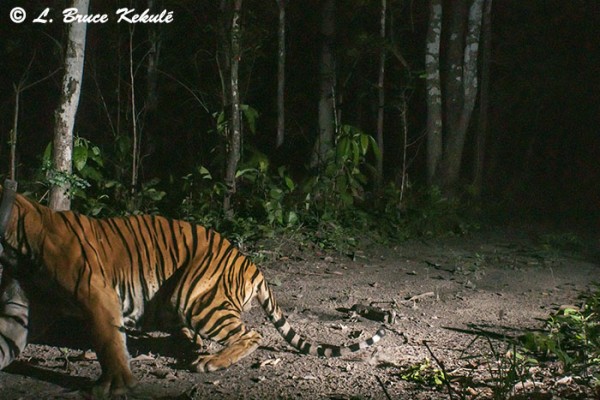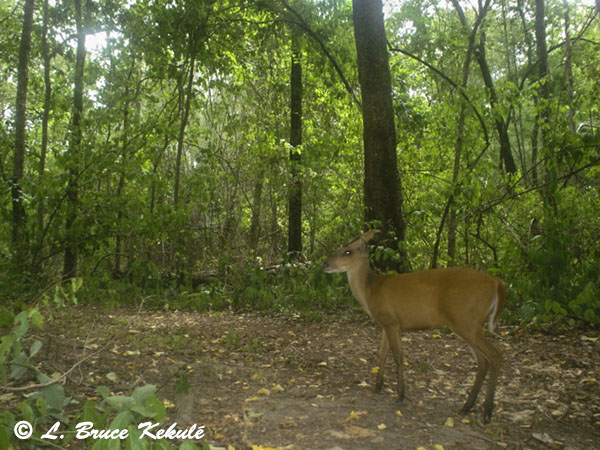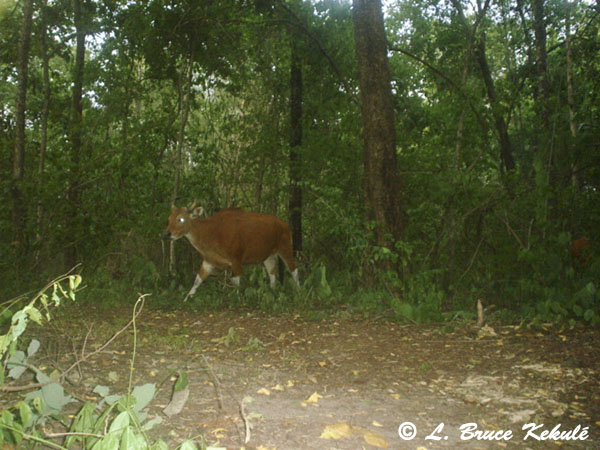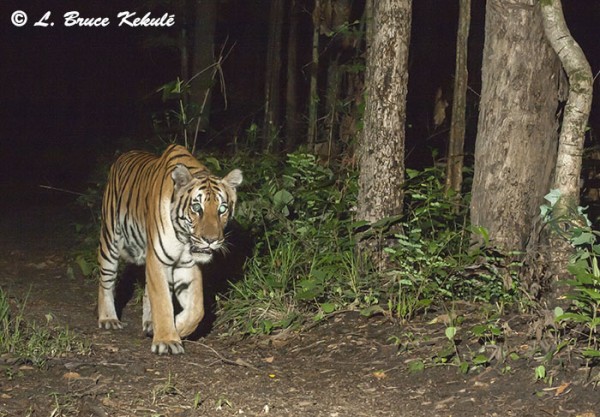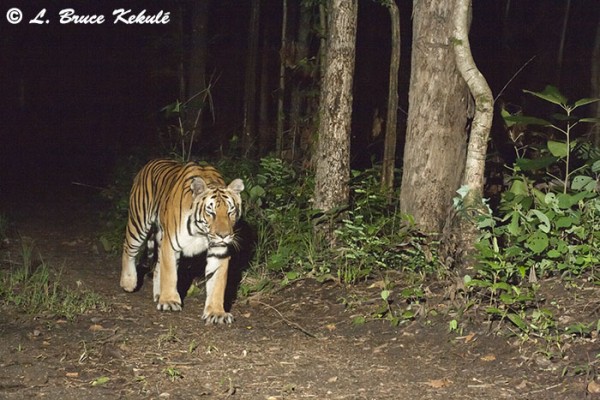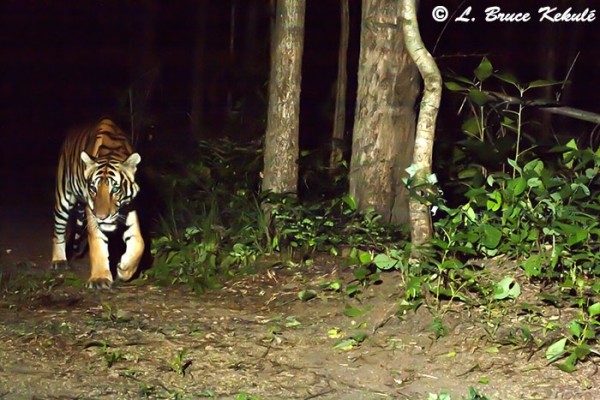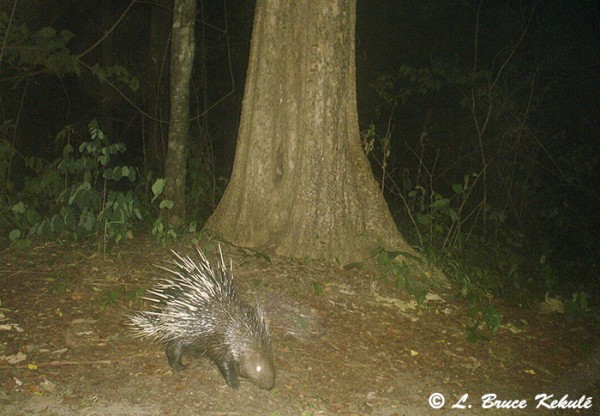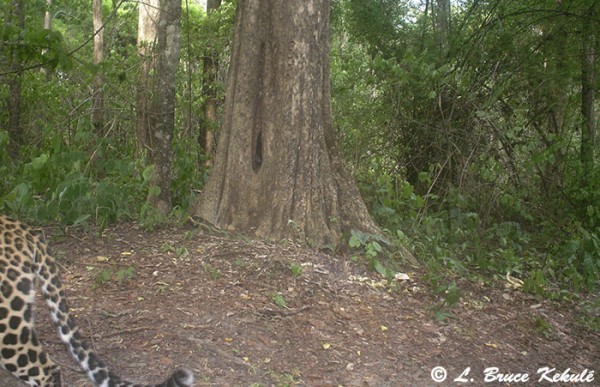Posts Tagged ‘trail cam’
Canon 400D catches an old Asian tapir and clouded leopard
Southern Thailand’s natural heritage – an odd-toed ungulate and a carnivore
A mature Asian tapir caught by a Canon 400D trail cam…!
Just returned from Khlong Saeng Wildlife Sanctuary in the south of Thailand and pulled my Canon 400D camera trap. These shots are of an old Asian Tapir and the best ones in this set as shown here. Being odd-toed ungulates and strictly vegetarian, these large herbivorous mammals thrive quite well in this unique ecosystem made up of moist evergreen forest. These unique creatures have been on the planet for about 40 million years. They are the largest of the world’s four species with the other three in South America…!
This tapir almost looks pregnant…!
A clouded leopard in daylight…!
This cam also caught a clouded leopard but the cat came in a bit low. These cats are not normally out in broad daylight but I guess they do sometimes prowl during the day. That was the trade off for the full-frame tapir shot. This sanctuary is simply amazing and I look forward to future visits…! Enjoy…!
An ISO Blunder
Sony A500 catches a tiger and poachers at ISO 12,800
Sometimes, mind lapse is a serious problem for a senior citizen like myself. I set my Sony A500 on a trail just inside the boundary of my favorite protected area in Thailand. This location has already produced some amazing shots of black leopard and tiger plus many prey species like elephant, banteng, barking deer, sambar and wild pig.
Tiger passes the Sony A500…!
Tiger with a radio collar passes the Sony…!
On the negative side of things, this cam has also caught poachers and gatherers as they illegally sneak into, and exit the sanctuary. Poor patrolling and enforcement with many loopholes allow these undesirables to penetrate and poach animals and forest products for sale or personal use. It is a serious threat to all of Thailand’s protected areas and is on-going problem for the Department of National Parks (DNP)…!
Poachers with baskets and digging tools after bamboo shoots during the rainy season…!
Wildlife poachers with no basket…!
This Sony has been working very well catching a male tiger with a radio collar at night several months ago. I noticed that several people on the forum were setting their cams at ISO 200 and thought I would give it a try. When I left the cam, I thought it was at the 200 setting.
A month or so later, I went back to change out batteries, card and desiccant, and saw the same tiger with a collar had visited twice plus some poachers caught using the same path. When I downloaded the images, I was shocked to see the ISO at 12,800…what the heck happened here…?
I don’t know but it looks like I did not save the settings before buttoning up the cam and somehow pushed the 12,800-button. This was of course another disappointment. The shots are cluttered with noise and I have tweaked the images but it’s a fact: photos with ISO this high is absolute rubbish and can only be counted as record shots.
Another thing: only one flash on the right was working hence the deep shadow. I found a broken wire on the other flash so brought the whole unit in for repair. I will be setting another Sony (A55 with a 55mm lens) DSLR cam with 4 flashes (hard-wired) to see what might pass-by.
The ‘Tiger Hunter’ setting a Bushnell Trophy Cam…!
The A500 cam is now back in the forest but at a new location with settings at ƒ8 – 1/125 – ISO 200. It was working well firing off 4-shot strings during walk test and hopefully it will produce some good shots now. Leopards and tiger plus all the other denizens of the Thai forest use this trail so I can only wait till I get back to the cam in a couple weeks.……!
Sony A500 catches a male tiger with a ‘radio collar’
A male Indochinese tiger in the Western Forest Complex of Thailand..!
What are the odds that my DSLRs would capture two different tigers sporting radio collars within one week of each other..? These are real fluke camera trap shots taken some twenty kilometers away from my Nikon D700 that caught a female also with a collar at the ‘tiger log’. I just posted this on this website a couple of days ago. http://brucekekule.com/camera_trapping/nikon-d700-catches-an-indochinese-female-tiger-sporting-a-radio-collar/
The Sony A500 was triggered by a male tiger on Sept. 17, 2014 at 10:26 PM while the D700 got a female on Sept. 24 at 5:45 AM. I only captured two tigers this trip and it seems weird that they both have collars. Maybe the ‘spirits of the forest’ wanted me to really show and tell the world what is actually going on in this forest concerning tigers. Who knows..?
Needless to say, I’ve already vented my feelings about tigers and radio collars in my recent D700 post so there’s no sense in going there again. However, the A500 got a nice string of shots of this male with a huge collar. I think the battery is on the bottom and transmitter on top. This monstrosity surely looks heavy..!
Unfortunately, only one flash on the right triggered which was a bit of a let-down. The other flash was up high on the tree pointing down at the tiger and would have cancelled that shadow. It was one of those things and there’s always next time. The A500 fired four quick shots and as the big cat jumped forward, triggered another five as he leaped to the right. All in all, I was still pleased with the results and look forward to a ‘black cat’ that I once videoed in broad daylight at this very location.
Noise is also a problem with these images, as I had to do some heavy tweaking in Camera Raw and Photoshop to get them to acceptable levels. If I had been shooting in JPG. format, there would be no chance to bring these back. RAW capture is the only way to revive images when things get dark with not enough light.
I’m not sure if this is inherent to Sony but I think most makes and brands with low light means serious noise although the newer pro-cameras handle noise quite well. The settings are: ƒ8 – 1/80th – 400 ISO…flash set to ¼ power, and lens was a Minolta 28mm (old lens I have had for years). It’s a wonder I got these shots at all..!
Oh well, back to the drawing board on flash standby power. I’m putting together a couple Nikon SB-28 and SB-600 flashes that will work with hard-wire or radio triggers with four Eneloop AAs in the flash and four rechargeable ‘Ultracell ‘D’ cells with 11,000 mAh capacity as externals to add more power for longer soaks. This will all fit in a lockable ‘Tupperware’ type box as shown.
I will try these on the A500 first to see if there is a difference with staying power. I also believe that three or more flashes are the ticket for well-lit shots…I know Steve Winter with N.G. sometimes uses from 4-5 flashes depending on terrain.
It’s a never-ending battle with the DSLRs but I guess that’s what I like about using them: the challenge to get tigers and leopards on digital camera plus all the other cryptic animals in Thailand’s forests…it all becomes worthwhile when I do get a shot or shots…! Enjoy.
‘Battered’ Banteng Bull
A short video and camera trap photos of a banteng bull in the ‘Western Forest Complex’ of Thailand. My Nikon D700 and a Bushnell Trophy Cam captured this seriously injured creature. This is ‘raw’ nature and could be disturbing to some…but this is the natural world and how it really is……!
Indochinese tiger ‘eye lash’ speed…!
A Canon 400D trail cam catches a male tiger
Old green eyes’…out on a ‘night prowl’…1st shot…!
A couple of days ago, I was checking my cams and got to my Canon 400D on a forest road somewhere in the Western Forest Complex of Thailand. When I got to the cam, it was still working but only one flash three feet above the cam was firing hence the ‘eye-shine’ . The other two flashes were dead…! Life on two Canon Lithium batteries in 30 second power save mode is excellent so I left them just to see how long they would really last….!
Tiger squinting…..2nd shot.
The flash that fired was a SB-26 which I normally set for slave but somehow the settings was on full-power…needless to say, I was delighted and did back-flips when I saw a tiger again, in about the same position as the female back in June in two shots. In both instances, the tigers had their eyes open on the first shot and squinted by the second in almost the same positions. This reaction time is measured in milliseconds…!
Last month’s female tiger…..1st shot.
Then they both jumped out of the frame before the camera could shoot again. This is 100% luck….also shifted the 400D over a tad to the left for better composition. I have included last month’s female tiger shots so a comparison can be made without having to flip back to the old post.
Female squinting…..2nd shot.
All I can say, it boggles the mind but shows how fast tigers can react……Enjoy…!
Canon 400D set to continuous
Nikon 50mm ƒ1.4 manual lens
Nikon SB-26 set to full power.
1/125 – ƒ8 ISO 400.
SSII sensor #6 chip – Pelican 1150
1st shot – cropped and the rest normal size.
Sony P41 trail cam catches Asian wildlife
Leopard, bear, elephant and other rare creatures caught by a home brew ‘point and shoot’ camera trap
A black-phase leopard.
As I was in the forest checking my DSLRs last month, this little area where I park my truck looked like it might be promising and most likely used by some cryptic wildlife. I decided to setup my old Sony P41/BF board/Pelican 1040 with two ‘C’ cell externals (built for me by Dave, the old owner of BFOutdoors.com).
A yellow-phase male leopard.
An Asian black bear.
The cam is encased in an ‘elephant proof’ box attached to a tree and locked down with a Python cable. I’ve had this cam since 2008 and it’s still working very well. I usually carry a few of my old ‘point-n-shoots’ in the truck in case I need to survey a new trail or location like this.
A female muntjac (barking deer).
A green peafowl.
A couple weeks later, I was back and found a whole slew of animals had come by. A black leopard was the first through followed by a yellow-phase leopard, a muntjac (barking deer) and then a black bear. Other creatures that also came were green peafowl, elephant, large Indian civet, porcupine, several smaller civets and finally the tail end shot of a leopard again in daytime.
An Asian elephant – some strange flare.
Even though some of these photos are not the best, they are a good indication of what passes through. I previously got a tiger 50 meters from here. I have already decided to set-up a DSLR across from this tree and worked out where the flash and sensor positions would go…it looks very promising….I just gotta get back there…to be continued…!
A large Indian civet.
An Asian porcupine.
The tail-end of a leopard.
Sony A500 trail cam catches gaur bull
A young bull at a mineral deposit in the Western Forest Complex of Thailand
This is my first capture with the Sony A500 DSLR trail cam at this new location. Loads of wild cattle including gaur and banteng plus other large mammals like tiger and elephant come to this deposit for minerals. Unfortunately, the flashes did not go off and I have pulled the unit to change out the sensor (SSII) which has been tripping as if refresh is actuating the cam. I was lucky to get this shot as the rest of the frames are empty. I believe the chip is the old #5 hence the camera is tripping till the card is full and the flashes went dry…The 28mm lens however, seems OK for the large herbivores and carnivores at this setup.
Look what I missed…!
Last month, an elephant destroyed one of my slave flashes on the D700 causing a shut down of the system due to a short in the flash cable. I left the cam for awhile longer with only two slaves but nothing crossed over the ‘tiger log’. I then decided to bring the setup to Bangkok to repair the third flash. I left a Bushnell Trophy Cam in place to see what wildlife would come to the ‘tiger log’.
Well as luck will have it, an Asian black bear (Ursus thibetanus) came up to the log but did not cross. Some thirty minutes later, a yellow phase leopard (Panthera pardus) jumped up on the log and posed. The next day, a tiger (Panthera tigris) passed by very quickly proving once again that this location continues to produce images of Thailand’s top predators on a regular basis.
My D700 is now back on the log and was working well when I left it two days ago. It is hoped that the ‘big cats’ will continue to cross over the log and trip the sensor…







